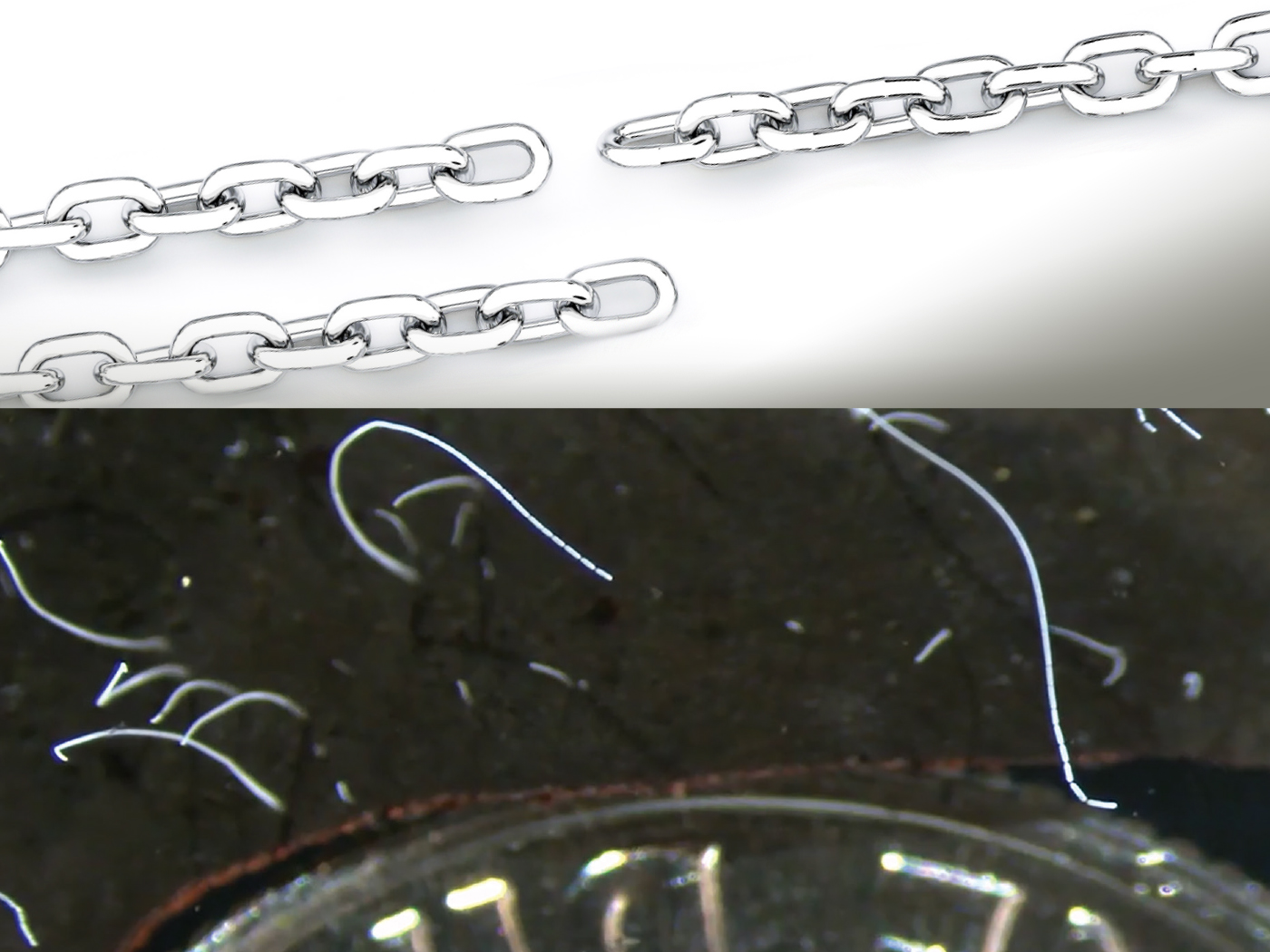by Jeffrey P. Tomkins, Ph.D., Tim Clarey, Ph.D., and Jason Lisle, Ph.D.*
Scientists recently discovered a community of fossilized sulfur-metabolizing bacteria that are alleged to be 1.8 billion years old.1 Surprisingly, the microbes are virtually identical to their modern counterparts, yet the study authors claim that the microbes are proof of evolution.
In recent decades, the discovery and documentation of microbial Precambrian fossils have markedly changed long-held ideas about the fossil record and its age. In fact, secular scientists now believe they can document life’s history as far back as 3.5 billion years—roughly three quarters of the supposed age of the earth.2
These Precambrian microbes are typically found in a type of rock called chert. Most cherts are nearly pure microcrystalline quartz and have been commonly used to make arrowheads and spear points. Chert’s fine texture is able to preserve minute details of the unique filamentous-shaped sulfur bacteria. Various types of microfossils have been reported in numerous chert-rich rocks from so-called Precambrian strata.2 According to the current study in the Precambrian Duck Creek Formation, the chert appears to be a secondary replacement, where supersaturated amorphous silica gel traveled through the original carbonate rock, replacing it with chert and preserving the microbes in the process.
In this new study, scientists found that the “1.8 billion year old” microbe fossils from Western Australia were identical to those in a separate chert deposit, also from Western Australia, believed to be 2.3 billion years old. The researchers compared these two sets of fossils to communities of live deep-sea sulfur bacteria found off the west coast of South America. Interestingly, all of the creatures looked virtually identical—an assessment supported by microscopically examining their unique filamentous physical structure and community characteristics. Amazingly, evolutionists are claiming that this new discovery of microbial stasis is actually evidence for evolution, despite the fact that no evolution was observed. Where is the logic in this conclusion?
J. William Schopf, lead author of the study, stated, “If evolution is a product of changes in the physical and biological environment, and there are no changes in the physical and biological environment, then there will be no evolution.”3 So how would one answer a statement like this?
“Evolutionary stasis” is an oxymoron. When a complete lack of change is counted as evidence for evolution, and substantive change is also counted as evidence for evolution, it shows that evolution is an arbitrary and unfalsifiable assumption—not a hypothesis. The term “evolution” becomes undefined and meaningless, a slippery mechanism called upon to explain anything and everything. In a sense, it explains nothing. That is, any evidence whatsoever that could be discovered is interpreted as supporting evolution. How is this approach even remotely scientific?
Creationists have long maintained that a key evidence against evolution is the fact that virtually all fossil organisms appear in the fossil record suddenly, fully formed and without transitional forms between kinds. And when fossils are found that resemble a modern counterpart, they always appear nearly identical and show no signs of evolution.4
Stasis, in the sense that kinds always remain the same, is a direct prediction of the creation model as indicated in the book of Genesis, which designates that biological life reproduces only after its kind.4 And there is nothing unscientific or illogical about that.
References
- Schopf, J. W. et al. 2015. Sulfur-cycling fossil bacteria from the 1.8-Ga Duck Creek Formation provide promising evidence of evolution’s null hypothesis. Proceedings of the National Academy of Sciences. 112 (7): 2087-2092.
- Schopf, J. W. 2000. Solution to Darwin’s dilemma: Discovery of the missing Precambrian record of life. Proceedings of the National Academy of Sciences. 97 (13): 6947-6953.
- Netburn, D. By not evolving, deep sea microbes may prove Darwin right. Los Angeles Times. Posted on latimes.com February 3, 2015, accessed February 9, 2015.
- Morris, J. D. and F. J. Sherwin. 2010. The Fossil Record: Unearthing Nature’s History of Life. Dallas, TX: Institute for Creation Research.
* Dr. Tomkins received his Ph.D. in Genetics from Clemson University. Dr. Clarey received a Ph.D. in geology from Western Michigan University. Dr. Lisle received a Ph.D. in astrophysics from the University of Colorado. Dr. Clarey is a Research Associate, Dr. Tomkins is Director of Life Sciences, and Dr. Lisle is Director of Physical Sciences at the Institute for Creation Research.

















